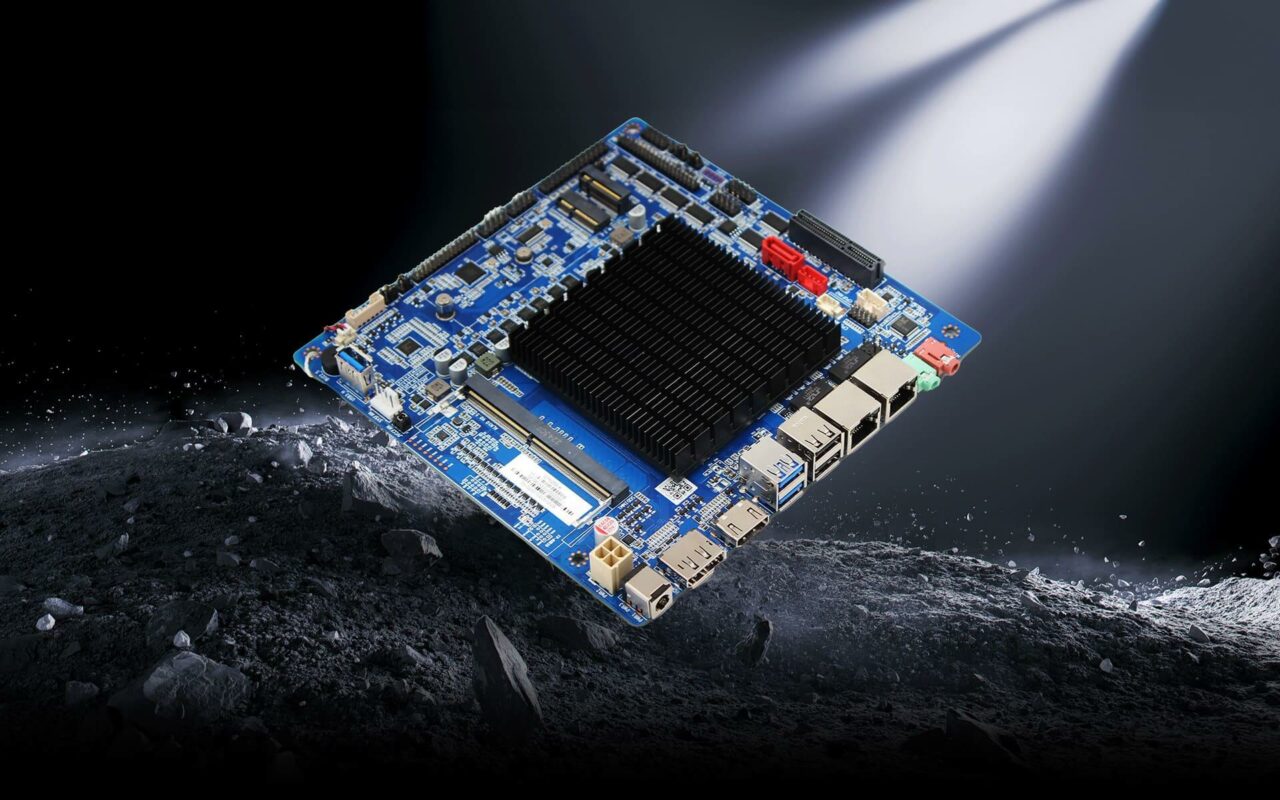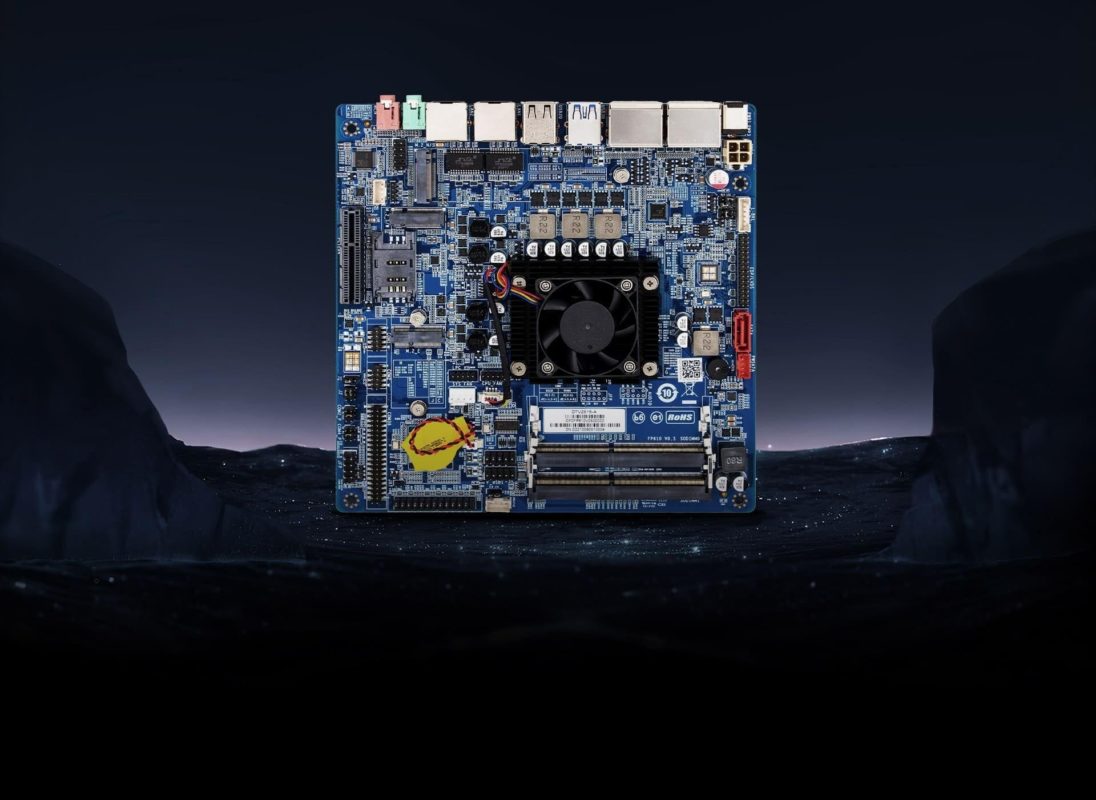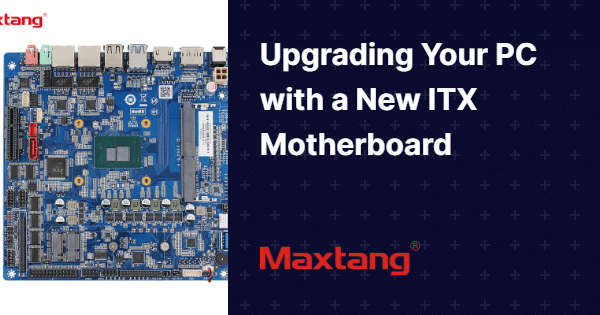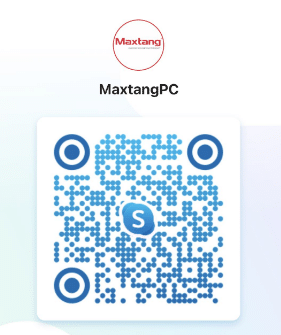Contemplating the enhancement of your PC system by integrating a new ITX motherboard? This all-encompassing guide is designed to provide a detailed walkthrough of the entire process, commencing with the identification of your financial constraints and prerequisites, and concluding with the appropriate disposal of your current motherboard.
Within this guide, the advantages of such an upgrade, along with potential obstacles, ensuring harmonization with other system components, common errors to circumvent, and the recommended frequency of upgrades, are elucidated for your consideration.
Irrespective of your proficiency level in the realm of technology, whether well-versed or a novice, this article serves as a comprehensive resource, encapsulating all pertinent information relating to the installation of an ITX motherboard.
1. Determine Your Budget and Needs
Ahead of initiating an ITX motherboard upgrade, it is imperative to meticulously evaluate your budget limitations and individual requirements to guarantee a smooth and economical transition.
Establishing a practical budget range in accordance with your financial capabilities will help prevent excessive spending or sacrificing essential features. Clearly identifying your specific needs, including the compatible processor, memory capacity, and preferred connectivity options, is essential in narrowing down the extensive array of motherboard options offered in the market. This focused strategy not only simplifies the decision-making process but also guarantees that you procure a motherboard that aligns with your performance standards without exceeding your financial means.
2. Choose the Right ITX Motherboard
The process of selecting the ideal ITX motherboard necessitates a thorough evaluation of compatibility issues, an examination of critical features, and a comprehensive understanding of how each component aligns with one’s upgrade objectives to achieve optimal performance.
Regarding form factor compatibility, it is imperative to ensure that the ITX motherboard fits seamlessly into the designated PC case to preempt any potential challenges during installation or spatial limitations.
Furthermore, the consideration of available ports such as USB, HDMI, and audio connections holds significant sway over the functional capabilities and versatility of the system. Factors such as Wi-Fi support, M.2 slots for rapid storage solutions, and PCIe slots for future expansion opportunities must also be carefully deliberated upon when pursuing the selection of an ITX motherboard that aligns with specific requirements and long-term upgrade strategies.
3. Gather All Necessary Tools and Components
Ensure a seamless upgrade process by procuring all the necessary tools and components essential for the installation of the ITX motherboard. This includes upgrading tools, SATA cables, and appropriate cooling solutions.
The utilization of screwdrivers in various sizes is imperative during the installation procedure as they facilitate the secure fastening of components without causing any damage. Additionally, the application of thermal paste is critical to enhance heat transfer efficiency between the CPU and the heatsink, thereby ensuring optimal cooling performance.
The utilization of anti-static wrist straps is critical to prevent the occurrence of static electricity-induced damage to sensitive electronic components throughout the installation process. Furthermore, the preparedness with SATA cables is essential for the seamless connection of storage devices to the motherboard, thereby enabling smooth data transfer operations.
In the selection of cooling solutions, it is advised to consider factors such as the case size and airflow to guarantee effective heat dissipation and sustain optimal performance standards.
4. Power Off and Disconnect Your PC
Before replacing the motherboard, it is imperative to ensure that the PC is powered off and disconnected from all power sources. Additionally, it is essential to follow necessary precautions to mitigate the risk of static electricity, particularly if one lacks extensive hardware knowledge.
Turning off the power supply constitutes the initial crucial step in ensuring safety during a motherboard replacement. Following the shutdown of the PC, all cables connected to the computer should be unplugged to prevent any potential damage caused by residual electrical charge when handling the internal components. Grounding oneself by touching a metal surface before physical contact with sensitive hardware can aid in dissipating any static electricity buildup, thereby reducing the likelihood of harming delicate components. When dealing with the new motherboard, it is advised to exercise caution and refrain from exerting excessive force during the installation process to prevent damage to the board or other components.

ALN10 Intel® Alder Lake Embedded Motherboard
5. Remove the Old Motherboard
Adhere diligently to the removal instructions for the uninstallation of the previous motherboard, ensuring precise alignment of components and disconnection from all peripherals to facilitate a smooth transition to the new ITX motherboard.
- To commence, power down the computer and disconnect all cables and external peripherals.
- Take careful note of the locations and types of cables being detached to guarantee accurate reconnection at a later stage.
- Utilize appropriate tools to unscrew the mounting points that secure the motherboard in its position, ensuring the screws are well-organized for subsequent reassembly.
- Handle all components, such as RAM sticks and the CPU, with care while removing them from the old motherboard.
- Inspect for any additional attachments, such as heatsinks or expansion cards, which must be detached meticulously before the complete removal of the motherboard.
6. Install the New ITX Motherboard
One should efficiently install the new ITX motherboard by adhering to the correct installation process, securely fastening the M.2 SSD, and implementing effective cable management techniques to optimize performance and ensure system reliability.
During the installation of the new motherboard, it is crucial to commence by meticulously aligning it with the standoffs in the case and fastening it using the provided screws. Subsequently, the M.2 SSD should be delicately inserted into its designated slot on the motherboard, ensuring correct positioning and secure attachment.
While connecting cables, attention should be given to routing them in a tidy manner to prevent airflow obstruction and achieve a visually appealing interior. Proper organization and securement of cables not only improve airflow but also facilitate easier troubleshooting and component upgrades in the future.
7. Connect All Components and Cables
Establishing seamless connectivity involves properly connecting all components and cables to the new ITX motherboard, with special attention given to SATA connectors. Effective cable management practices should be implemented to ensure a clutter-free build.
It is crucial to correctly align the CPU in its socket and secure it with the retaining arm to provide reliable power to the system.
Insert the RAM modules into the designated slots, ensuring they click into place for optimal performance.
Subsequently, carefully install the GPU into the PCIe slot, ensuring a secure fit and engaging the locking mechanism.
By securely fastening the SATA connectors, one can prevent data transfer issues and maintain a stable connection to storage drives.
Neatly organizing cables using zip ties or Velcro straps to route them away from obstructing airflow is essential for efficient component cooling and maintaining a clean and orderly setup.
8. Power On and Test the New Motherboard
Upon completion of the installation, power on the system to assess the functionality of the newly installed ITX motherboard. Conduct benchmark testing to evaluate performance and have troubleshooting strategies in place to effectively address any potential performance issues that may arise.
Benchmark tests play a crucial role in assessing the performance capabilities of the motherboard and ensuring optimal functionality of all components. By executing benchmark tests, one can analyze various factors including CPU and memory performance, thermal efficiency, and overall system stability.
Throughout the testing phase, it is imperative to monitor metrics such as processing speed, temperature levels, and system responsiveness. If any challenges surface during benchmark testing, such as overheating, system crashes, or performance inconsistencies, it is advisable to consult the troubleshooting guides provided by the motherboard manufacturer.
Promptly addressing these issues is vital to prevent any long-term hardware damage or potential loss of data.
9. Update Drivers and BIOS
Ensure the optimal operation of the system by performing essential tasks such as updating the BIOS, installing the latest drivers, and confirming the compatibility of firmware with the new ITX motherboard. These actions are key to maximizing the potential of the motherboard and effectively addressing any compatibility issues that may arise.
The initial step in this process is updating the BIOS, a critical task that contributes to enhancing system performance and stability. This involves visiting the website of the motherboard manufacturer, downloading the latest BIOS version available, and meticulously following the provided instructions for installation.
Following the successful completion of the BIOS update, the subsequent action is to install the necessary drivers for each component of the system, including the graphics card, chipset, and network adapter. Verifying the compatibility of firmware entails ensuring that updates are installed for devices such as SSDs and GPUs to prevent any potential conflicts.
Any conflicts arising from drivers can be addressed through the Device Manager, where options to update, roll back, or uninstall conflicting drivers are available. To maintain system stability, it is advisable to regularly check for driver updates and firmware patches, thereby ensuring smooth and efficient system operation.
10. Dispose of Old Motherboard Properly
Ensure the proper disposal of the old motherboard in accordance with environmentally friendly practices. Ahead of recycling or discarding the outdated hardware, transfer any essential data and conduct a system backup to safeguard your files.
In the context of environmentally sound methods for disposing of electronic waste, it is imperative to initially verify the availability of local electronics recycling programs or collection centers that accept old motherboards. These facilities typically implement specific protocols for managing electronic waste to reduce environmental harm.
Plus responsibly disposing of the hardware, guarantee the secure transfer of all personal data to the new motherboard. Employ data migration tools or external storage devices to facilitate a seamless transition. It is essential to back up critical files before initiating the system upgrade to mitigate any unforeseen complications, thus minimizing the risk of data loss and ensuring the protection of important information.

FP610 Bes Low Profile ITX Motherboard
What Are the Benefits of Upgrading to an ITX Motherboard?
The adoption of an ITX motherboard offers a notable enhancement in performance efficiency, energy conservation, and the provision of a compact design that optimizes spatial utilization while preserving top-tier system functionalities.
The performance enhancements brought about by ITX motherboards manifest in accelerated data processing speeds, diminished latency in applications, and improved multitasking capabilities. Moreover, the energy-efficient attributes facilitate a decrease in electricity consumption and heat production, resulting in a quieter, more environmentally conscious computing environment. The compact design of ITX motherboards enables more efficient and organized PC constructions, simplifying cable and component management. These advantages collectively contribute to an overall improved system performance and user experience.
What Are the Potential Challenges of Upgrading Your Motherboard?
The process of upgrading a motherboard can introduce various challenges, including potential compatibility issues with other components. Addressing these challenges may necessitate troubleshooting expertise and the resolution of firmware conflicts to guarantee a seamless transition.
When encountering compatibility concerns during motherboard upgrades, it is imperative to meticulously verify the socket type, chipset compatibility, and RAM slots to ensure alignment with the new motherboard. Troubleshooting strategies may entail the execution of diagnostic tests, driver updates, and adjustments to BIOS settings. Additionally, resolving firmware or software conflicts can involve examining the device manager for conflicting drivers, updating BIOS firmware, and performing a clean installation of the operating system if necessary. These steps are essential to facilitate a smooth transition and optimize performance.
How Can You Ensure Compatibility with Other Components?
Achieving compatibility with other components requires meticulous alignment of components, thorough examination of compatibility issues, and careful selection of components that align with the ITX motherboard specifications to ensure smooth integration.
The proper alignment of components is pivotal in ensuring seamless fitting and optimal functionality. Misaligned components can lead to performance issues, overheating, or system failure.
It is imperative to conduct a thorough check for compatibility problems prior to installation to avert conflicts that may cause system instability or malfunctions. Opting for components specifically engineered to work with an ITX motherboard enables users to preempt potential challenges and relish in a seamless and dependable computing experience.
What Are Some Common Mistakes to Avoid When Upgrading Your Motherboard?
Avoiding common mistakes while upgrading a motherboard requires a comprehensive understanding of hardware components, meticulous attention to detail during the installation process, and thorough pre-upgrade planning to effectively mitigate errors.
Understanding prevalent errors that occur during motherboard upgrades is essential. One frequent mistake is failing to match the socket type of the new motherboard with the processor. This error can lead to compatibility issues and render the upgrade ineffective. Neglecting to update the BIOS firmware before replacing the motherboard can result in stability issues. To ensure a seamless upgrade process, it is crucial to conduct thorough research on compatibility, verify specifications, and handle hardware carefully to prevent any damage.
How Often Should You Upgrade Your Motherboard?
Determining the optimal timing for motherboard upgrades necessitates meticulous planning, synchronization with prospective upgrades, and evaluation of the necessity for improved performance or compatibility with emerging technologies to remain abreast of hardware developments.
Considering the swift progression of technological advancements, it is crucial to assess the durability of the existing motherboard and its capacity to accommodate forthcoming hardware innovations. By monitoring industry trends and estimating the longevity of the current configuration, informed determinations can be made regarding the opportune moment to procure a new motherboard.
The potential for compatibility challenges arises when novel components necessitate specific functionalities absent in the current motherboard, underscoring the significance of forward-thinking upgrade approaches.
Is Upgrading Your Motherboard Worth It?
The assessment of whether upgrading one’s motherboard is a worthwhile endeavor necessitates a comprehensive analysis of prevailing market trends, an evaluation of user satisfaction levels, and a consideration of the potential performance enhancements and system optimizations that may arise from such an upgrade.
A thorough comprehension of the market landscape pertaining to motherboard upgrades give the power tos users to make well-informed decisions regarding the latest technologies and features available. User feedback and satisfaction metrics play a pivotal role in assessing the practical experiences of individuals who have previously undertaken motherboard upgrades. This feedback offers invaluable insights into the reliability, compatibility, and overall performance of various motherboard models.
Elevated performance levels and an enhanced user experience serve as critical determinants that shape the decision-making process, as users strive to maximize their system’s capabilities for activities such as gaming, productivity, or creative endeavors.
Frequently Asked Questions
What is an ITX motherboard and why should I upgrade to one?
An ITX motherboard is a type of small form factor motherboard that is designed for compact PC builds. Upgrading to an ITX motherboard can save space, improve performance, and provide more options for customization.
What tools do I need to upgrade my PC with a new ITX motherboard?
The tools you will need include a screwdriver, thermal paste, and possibly an anti-static wrist strap. It’s also a good idea to have a clear workspace and a user manual for your new motherboard.
Can I upgrade my PC with an ITX motherboard if I have a larger case?
Yes, you can upgrade to an ITX motherboard even if you have a larger case. However, you may need to purchase additional accessories such as an ITX mounting bracket or riser card to properly install the motherboard in your case.
Do I need to reinstall my operating system when upgrading to an ITX motherboard?
In most cases, you will not need to reinstall your operating system when upgrading to an ITX motherboard. However, you may need to update drivers and BIOS settings to ensure compatibility with the new motherboard.
What should I consider when choosing an ITX motherboard for my PC upgrade?
Some important factors to consider include the socket type for your CPU, the number of RAM slots, available expansion slots, and compatibility with your current components. It’s also important to consider your budget and the specific features you need for your PC build.
Is it difficult to upgrade to an ITX motherboard if I have never done it before?
The level of difficulty can vary depending on your experience and the complexity of your PC build. However, with the right tools, resources, and patience, most people can successfully upgrade to an ITX motherboard. It’s always a good idea to do thorough research and consult with experts if necessary.




